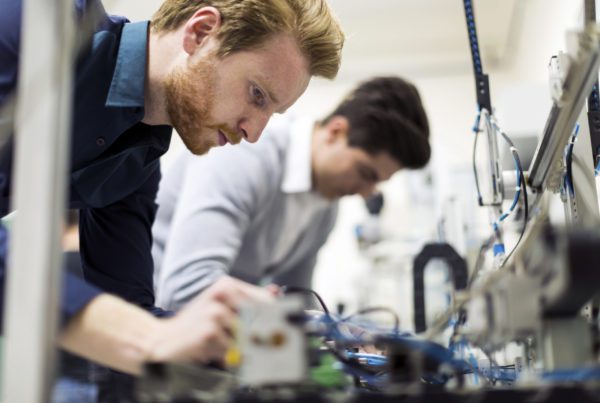
What is it?
Memory shape material cooling (elastocaloric cooling) is a new application for shape memory alloys. Materials that exhibit shape memory will return to their original cast or molded form when heat is applied. Shape memory materials are currently used in biomedical applications, super cool space ship parts, and everyday things like eyeglass frames and orthodontic wires. When shape memory alloys are deformed (stretched or compressed), they change in temperature. The temperature change exhibited by the most common shape memory alloy, nickel-titanium, can be as much as 20°F. The temperature fluctuation of the material is leveraged to provide cooling.
How does it work?
Groups of shape memory alloy wires are arranged into a wheel, similar to a bike tire. As the wheel rotates, one side is compressed, while the other is allowed to relax. It’s just like riding an actual bike, where the side touching the road is compressed, and the other rotates freely. The compressed side of the wheel heats up due to the shape memory alloy properties. This heat is rejected, and the alloy returns to room temperature but remains compressed. As the wheel rotates, the compression is removed, and the alloy cools down to below room temperature. Room air then passes over the cool wires, generating cooling. This cycle can be repeated to provide continuous cooling.
What are the most appropriate applications?
Initial tests of the system are focused on cooling systems the size of a residential refrigerator. Theoretically, it could be expanded to larger systems, but more research into materials, configurations, and system setups is needed.
What are the savings?
Early research has tested coefficients of performance (COP) between 8 and 14. Typical residential refrigerators operate with a COP around 3, resulting in 50 – 80% reductions in energy usage. The most efficient large commercial chillers have COPs around 10, indicating significant improvements could be made in commercial buildings if the technology is found to scale effectively.
What are the non-energy benefits?
The most significant non-energy benefit is the removal of liquid refrigerants, such as ammonia, or hydrofluorocarbons. These chemicals are potent greenhouse gasses when spilled and released into the atmosphere.
What is the status/availability of the technology?
This is a very early stage technology and is still in the prototyping phase. Setups are experimental and currently don’t deliver cooling capacities large enough. Ongoing research focuses on optimizing the wire configurations to increase cooling capacity and improve the efficiency of proposed designs.



